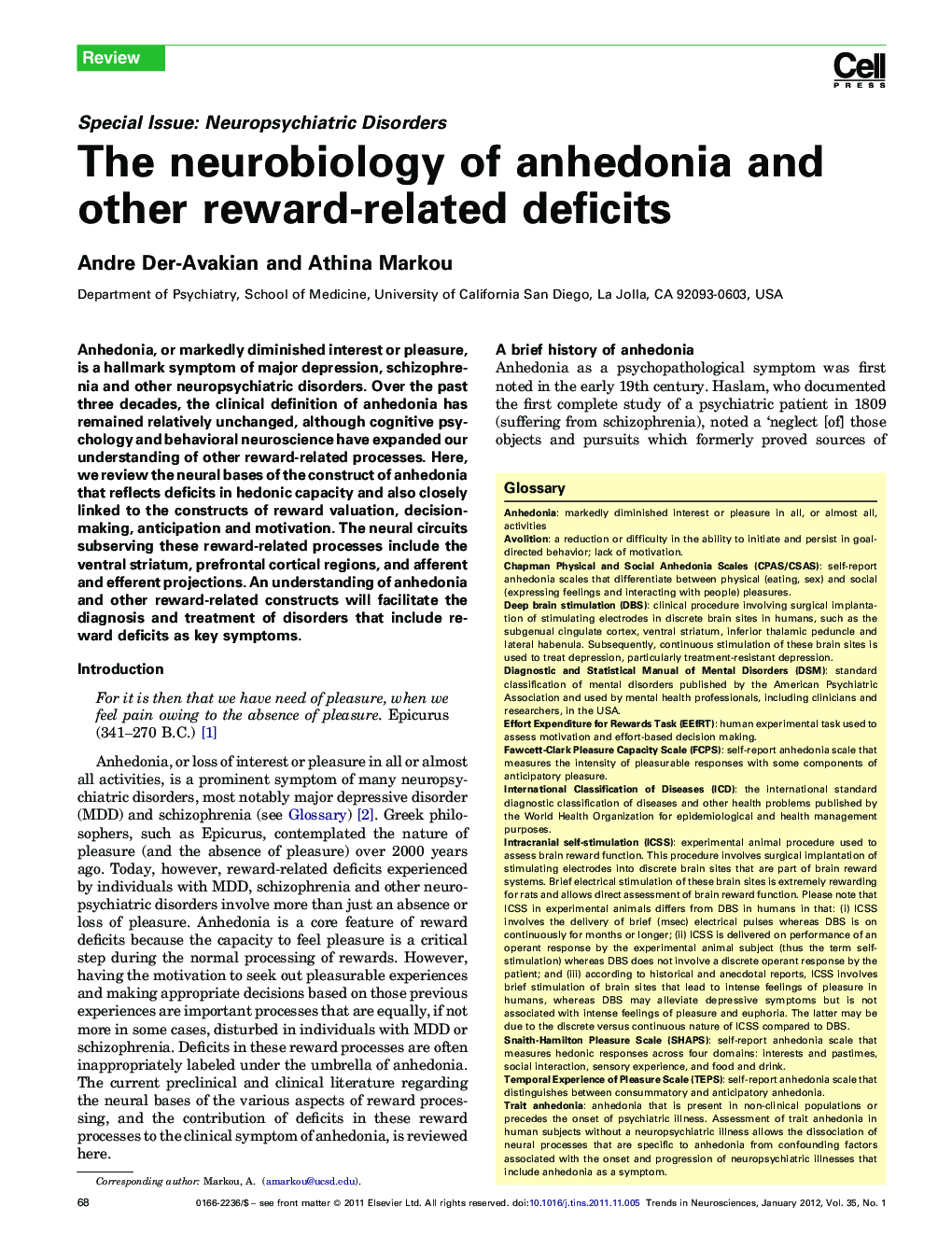| Article ID | Journal | Published Year | Pages | File Type |
|---|---|---|---|---|
| 4354413 | Trends in Neurosciences | 2012 | 10 Pages |
Anhedonia, or markedly diminished interest or pleasure, is a hallmark symptom of major depression, schizophrenia and other neuropsychiatric disorders. Over the past three decades, the clinical definition of anhedonia has remained relatively unchanged, although cognitive psychology and behavioral neuroscience have expanded our understanding of other reward-related processes. Here, we review the neural bases of the construct of anhedonia that reflects deficits in hedonic capacity and also closely linked to the constructs of reward valuation, decision-making, anticipation and motivation. The neural circuits subserving these reward-related processes include the ventral striatum, prefrontal cortical regions, and afferent and efferent projections. An understanding of anhedonia and other reward-related constructs will facilitate the diagnosis and treatment of disorders that include reward deficits as key symptoms.
